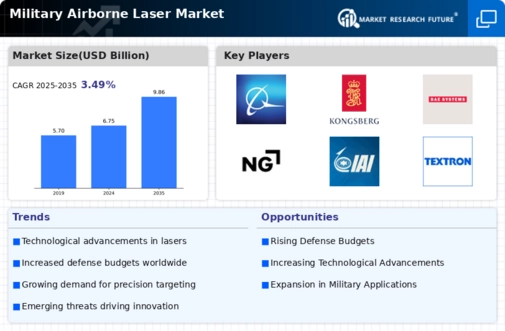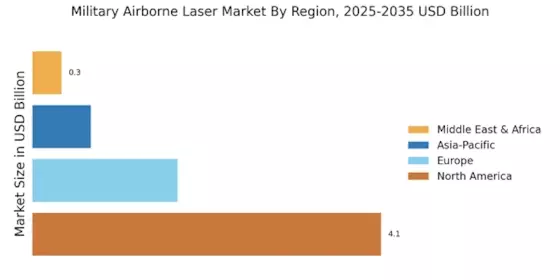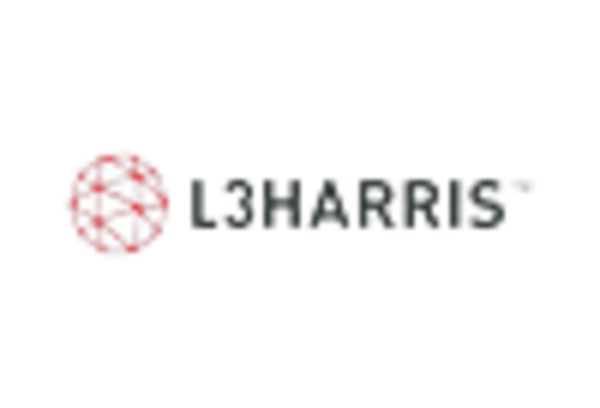Increased Defense Spending
In recent years, there has been a notable increase in defense spending across various nations, which is positively impacting the Military Airborne Laser Market. Governments are allocating larger budgets to enhance their military capabilities, particularly in advanced technologies such as airborne lasers. This trend is evident in countries that are prioritizing modernization of their armed forces. For instance, defense budgets in several regions have seen increases of 5% to 15% annually, reflecting a commitment to investing in cutting-edge technologies. This influx of funding is likely to accelerate the development and deployment of airborne laser systems, thereby expanding the market.
Focus on Counter-Drone Solutions
The rise of drone warfare has prompted a significant focus on counter-drone solutions within the Military Airborne Laser Market. As drones become more prevalent in military operations, the need for effective countermeasures has intensified. Airborne laser systems are being developed to neutralize these threats with precision and minimal collateral damage. This shift in focus is supported by market data indicating that the counter-drone technology sector is expected to grow at a rate of approximately 20% annually. Consequently, the integration of airborne lasers into counter-drone strategies is likely to drive market growth, as military forces seek to enhance their defensive capabilities.
Research and Development Initiatives
Research and development initiatives play a crucial role in shaping the Military Airborne Laser Market. Governments and defense contractors are investing heavily in R&D to innovate and improve laser technologies. These initiatives aim to enhance the performance, reliability, and versatility of airborne laser systems. Collaborative efforts between military organizations and private sector companies are fostering advancements that could redefine operational capabilities. Data indicates that R&D expenditures in defense technology are projected to increase by 8% annually, reflecting a strong commitment to innovation. This focus on R&D is likely to yield new products and solutions, further driving market growth.
Geopolitical Tensions and Security Threats
Ongoing geopolitical tensions and emerging security threats are significant drivers of the Military Airborne Laser Market. Nations are increasingly aware of the need to bolster their defense systems in response to potential conflicts. The proliferation of advanced weaponry and the rise of asymmetric warfare tactics have led to a reevaluation of military strategies. As a result, investments in airborne laser technologies are seen as essential for maintaining strategic advantages. Market analysts suggest that the demand for these systems will continue to rise as countries seek to address these evolving threats, potentially leading to a market expansion of over 15% in the next five years.
Technological Advancements in Laser Systems
The Military Airborne Laser Market is experiencing a surge in technological advancements, particularly in laser systems. Innovations in solid-state lasers and fiber lasers are enhancing the effectiveness and efficiency of airborne laser systems. These advancements allow for greater precision and range, which are critical in military operations. The integration of advanced targeting systems and artificial intelligence is also improving the operational capabilities of these systems. As a result, the market is projected to grow significantly, with estimates suggesting a compound annual growth rate of over 10% in the coming years. This growth is driven by the need for more sophisticated defense mechanisms against evolving threats.


















Leave a Comment